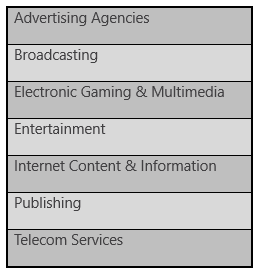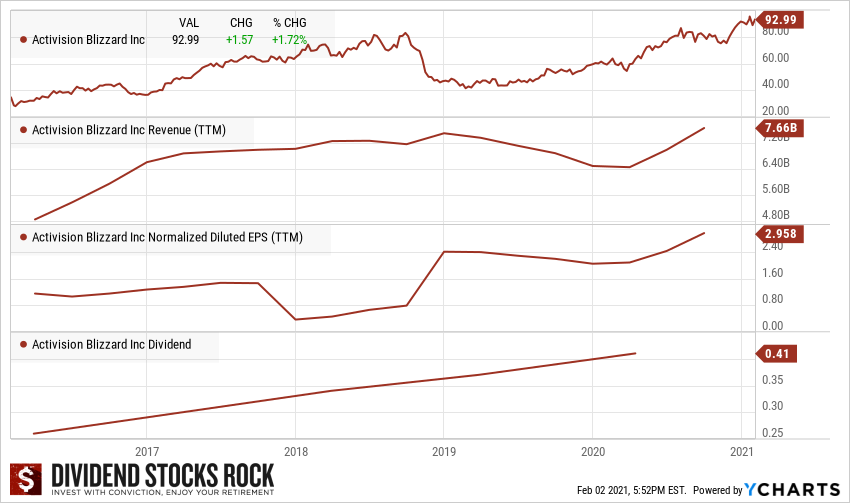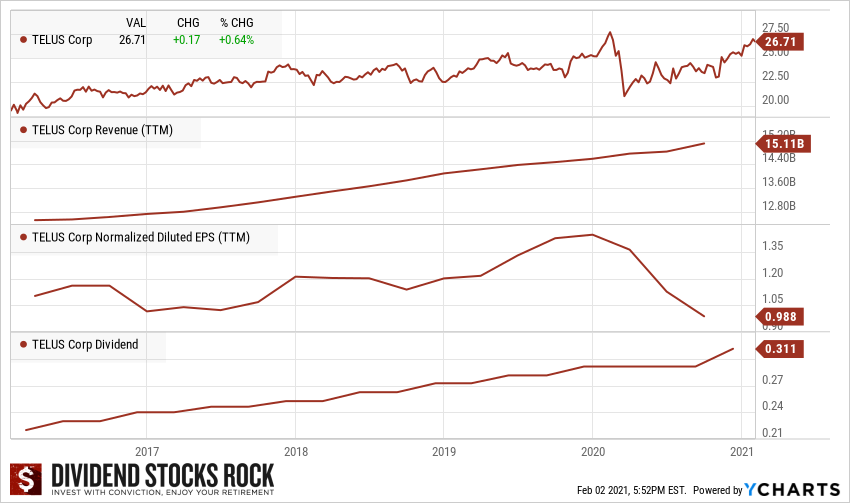Author: DivGuy
Go to Source
When you think of the communications services sector, you may automatically think of AT&T (T), Verizon (VZ), BCE (BCE.TO) (BCE), or Telus (T.TO) (TU). Those companies are praised by income seeking investors as they pay high yields and have shown consistent dividend growth. While their dividend increases are sometimes modest, those companies’ dividend growth typically matches inflation and thereby protects their payout from being eroded by inflation.

All Types of Content
But there is more than just the wireless industry here. We are talking about all types of content from advertising to cable and now, streaming and internet content. This is how “tech companies” like Facebook (FB) and Alphabet (GOOG) have pushed this sector on a more bullish trend. Disney (DIS) was once in the consumer cyclical sector and it is now part of the communication services sector after their purchase of the Fox assets.
Sub-Sectors (Industries)

For a dividend growth investor, I’d say the marvels are to be found in the wireless/telecom services industries. This sub-sector is packed with reliable dividend payers. Their secret? Everybody needs a phone, and we are all glad to pay monthly for it. With such reliable and predictable cash flow, telecoms have a great business model to serve income seeking investors. Interesting enough, even if cable TV (broadcasting / entertainment) or magazine (publishing) are on a secular downtrend, it will take years for those industries to become bad businesses. This shows you the power of a subscription-based business model.
Greatest Strengths
New technology entering a market is both a blessing and a curse. It all depends on which chair you occupy. Powerful network (5G) and streaming services will be tailwinds for the 2020-2030 decade. At the same time, it will be an important threat to any companies ignoring the trends. I doubt cable companies will thrive in 2030. They must shift toward streaming and other type of content delivery to survive.
Greatest Weaknesses
Except for the telecom industry, this sector is not strong on dividend growth industries. Even one of my favorite picks (Disney) suspended its dividend in 2020. Advertising agencies are facing strong headwinds as we are still in a recession. Publishing and broadcasting won’t attract new customers with their current business model.
We can see a bubble growing around the streaming industry. Electronic games and internet content are also surfing that same bubble. As technology could kill or save a business (see how DIS stock thrived in 2020 with Disney +), your ability to forecast the future will be important to make the right choices. If you don’t want to bother with the future of technology, stay with the telecoms and you’ll be fine.
Speaking of which, telecoms face another type of headwind. While we all want smartphones, the money required to develop strong networks is significant. This often leads to heavy debt loads for many players. This industry is capital intensive, and you must always keep that in mind.
How to Get the Best of It
I like having a few boring stocks in my portfolio. Since I’m 100% invested in equities, I usually pick a few companies with limited growth potential but solid dividends. Telecom companies fit this description well. If you are more adventurous, you can look at electronic gaming, entertainment and internet content industries to find some growth stocks. The choice is limited when it comes down to dividend growers though. Therefore, I made an exception in keeping my DIS shares.
The Electronic gaming, entertainment and internet content industries are usually better for growth investors.
The telecom industry is best for income investors.
I’ve covered the best telecom companies in the video below. Canadian Telecoms evolve in an oligopoly where the 3 biggest players control 90% of the wireless industry. And good news is, there is still a lot of room for growth! Watch the video to learn more about my top 4:
Favorite Picks
Activision Blizzard (ATVI)
- Market cap: 70B
- Yield: 0.45%
- Revenue growth (5yr, annualized): 8.04%
- EPS growth rate (5yr, annualized): 11.53%
- Dividend growth rate (5yr, annualized): 13.09%
 Source: ATVI website
Source: ATVI website
Business Model
Activision Blizzard was formed in 2008 by the merger of Activision, one of the largest console video game publishers, and Blizzard, one of the largest PC video game publishers. The combined firm remains one of the world’s largest video game publishers. Activision’s impressive franchise portfolio includes World of Warcraft, which boasts more than $8 billion of lifetime sales, and Call of Duty, which has sold over 175 million copies across 14 titles over 12 years.

Investment Thesis
With franchises like Call of Duty (CoD) and World of Warcraft (WoW), ATVI could be called the “Disney of video games”. But there is more to it. ATVI has been a pioneer in online gaming by offering numerous players to battle at the same time on the same ground. Those games are addictive, and their newest version is always expected from gamers. ATVI also developed several “add-ins” to ensure recurring revenue while developing their next blockbuster. With such success and size, ATVI has now the ability (e.g. resources) to develop more games following a similar success path. It’s easier to create a good game when you have the talent and marketing team behind it to ensure its success. You can expect ATVI to have a good year in 2020-2021 amid social distancing due to the virus. Subscriptions to their games should increase.
Telus (T.TO) (TU)
- Market cap: 35B
- Yield: 4.40%
- Revenue growth (5yr, annualized): 4.11%
- EPS growth rate (5yr, annualized): 4.65%
- Dividend growth rate (5yr, annualized): 8.18%

Business Model
Telus is one of the big three wireless service providers in Canada, with its 9M subscribers nationwide constituting almost 30% of the total market. It is also the ILEC (incumbent local exchange carrier; the legacy telephone provider) in Western Canada, where it provides Internet, television, and landline phone services. It also has a small wireline presence in Eastern Quebec. In recent years, Telus has moved to bring fiber to the home over most of its wireline footprint as it upgrades its legacy copper network leaving it able to compete on more equal footing with cable providers. Wireless is the more profitable of Telus’ two segments and its proportion of total sales–above 50% since 2010–has consistently grown over the last decade.

Investment Thesis
Telus can grow its revenues, earnings, and dividend payouts on a very consistent basis. Telus is very strong in the wireless industry and is now attacking other growth vectors such as the internet and television services. The company has the best customer service (read lower churn) in the wireless industry. It uses its core business to cross-sell its wireline services. The company is particularly strong in Western Canada. Telus is well-positioned to surf on the 5G technology tailwind. Finally, Telus looks at original (and profitable) ways to diversify its business. Telus Health, Telus Agriculture and Telus International (artificial intelligence) are small, but emerging divisions that should lead to more growth going forward.
Webinar: Where to Invest in 2021?
2,000+ investors saw this webinar already.
- KM: “Amazing webinar! Thanks very much!”
- Cheryl: “With thanks, I’m impressed!”
- Harley: “Thank you for your passion Mike.”
- Roberta: “I’m such a huge fan of DSR! Well done, Mike.”
The post Communication Services Sector: There is More than Just the Wireless! appeared first on The Dividend Guy Blog.
